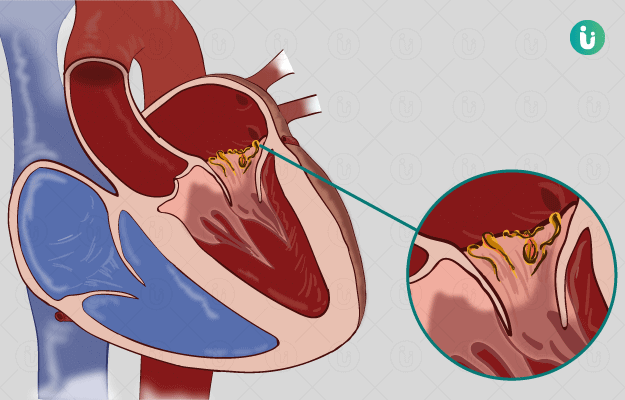What is Endocarditis?
The heart has three layers, namely, pericardium, myocardium, and the endocardium. Inflammation of the innermost layer, the endocardium, is called endocarditis. The endocardium usually gets inflamed due to bacterial infections. Bacteria enter through the mouth and reach the bloodstream and eventually affect the endocardium. Endocarditis requires an aggressive treatment, as it can damage the heart and cause life-threatening complications.
Click on the link given here, to know in detail about coronary heart disease treatment.
(Read More - First Aid for Heart Attack)
What are its main signs and symptoms?
Depending upon the bacteria causing infection, symptoms can develop slowly or rapidly; accordingly, it is categorised as acute or chronic. The symptoms of endocarditis vary in severity and depend on the pre-existing medical or cardiac problems. A few symptoms are listed below:
- Fever with chills
- Difficulty in breathing (dyspnoea)
- Chest pain on breathing
- Swelling of feet
- Petechiae (small pinhead-like red spots on skin)
- Fatigue
- Joint pains and body ache
(Read More - Peripheral artery disease)
What are the main causes?
Certain bacteria entering the body travel through the blood and reach the heart, causing endocarditis. Apart from bacteria, certain fungi can cause endocarditis. These bacteria enter the bloodstream through:
- Mouth
- Skin and gum infection
- Use of unsterilized needles or syringes or reuse of disposable ones
- Medical instruments such as catheters and laparoscopes
People with congenital heart diseases, heart valve diseases, hypertension, instilled prosthetic valves, or a history of heart disease are at high risk of endocarditis.
(Read More - Myocarditis treatment)
How is it diagnosed and treated?
An accurate medical history along with a proper physical examination usually reflects endocarditis. A physical examination may reveal the presence of abnormal heart sounds known as a murmur. It is important to know the bacteria causing the disease and the severity of the injury to the endocardium. Hence, certain investigations are required:
- Complete blood count (CBC)
- Blood culture with antibiotic sensitivity
- C-reactive proteins (CRPs) level testing
- Echocardiogram (also known as 2D echo)
- CT scan
(Read More - Where does the heart get its energy)
Treatment modalities for endocarditis include
- Medical Management –Broad spectrum antibiotics or those as per the culture report can be given orally or intravenously. Sometimes, antipyretics are used for controlling fever and alleviating body ache and malaise.
- Surgical Management – It is offered to the patients who succumb to heart-valve injuries such as mitral stenosis. Surgery is mainly performed to restore the function of heart valves. It can either be achieved by repairing the damaged valve or replacing it with artificial ones.
(Read More - What to eat for a stronger heart)

 OTC Medicines for Endocarditis
OTC Medicines for Endocarditis















